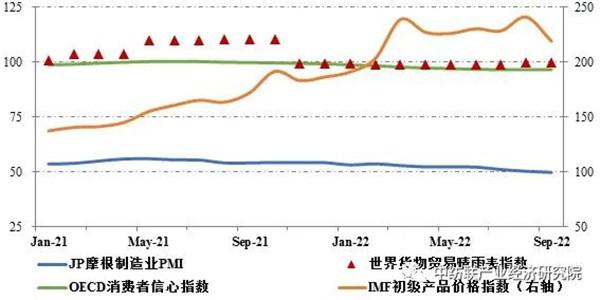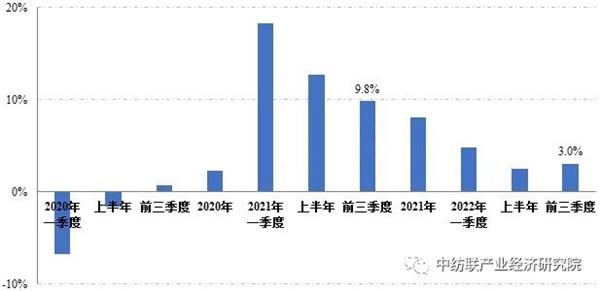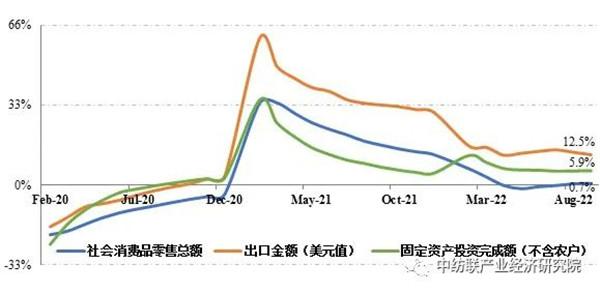Since this year, by the repeated epidemic, geo-conflict prolongation, energy shortage, high inflation, monetary policy tightening and other multiple complex factors continue to impact the global economy downward trend gradually clear, the demand-side pressure is more significant, the risk of economic recession rose sharply.
At the end of the third quarter, the global manufacturing industry turned into a contraction, September J.P. Morgan Global Manufacturing Purchasing Managers’ Index (PMI) of 49.8, the first time since July 2020 fell below the Rongkuk line, of which the new orders index is only 47.7, business confidence down to a new low in 28 months.
OECD Consumer Confidence Index stuck at 96.5 since July, in contraction territory for 14 consecutive months.
The global goods trade barometer index remained at the benchmark level of 100 in the third quarter, but as measured by the Netherlands Bureau for Economic Policy Analysis (CPB), excluding price factors, global trade volumes fell by 0.9% in July and increased by only 0.7% in August from a year earlier.
Influenced by tightening liquidity and economic downside expectations, global commodity prices gradually fell after August, but the overall price level is still at a high level, and the IMF Energy Price Index still increased by 55.1% year-on-year in September.
Inflation has not yet been fully controlled, the U.S. inflation rate peaked in June driven by factors such as slowing wage growth and gradually fell, but the inflation rate in October is still as high as 7.7%, the eurozone inflation rate of 10.7%, half of the OECD member countries inflation rate reached more than 10%.
China’s macroeconomy withstood the impact of the epidemic and the external environment is complex and severe, such as the impact of multiple factors beyond expectations, efforts to repair losses. With the national economic stabilization package of policies and successive policy measures falling into effect, the macroeconomic recovery and development momentum better than the second quarter, especially the production and domestic demand market continues to warm up, showing good development resilience.

In the first three quarters, China’s GDP grew 3% year-on-year, a growth rate of 0.5 percentage points higher than in the first half of the year; total retail sales of consumer goods, industrial added value of enterprises above the size of 0.7% and 3.9% year-on-year, the growth rate of 1.4 and 0.5 percentage points higher than in the first half of the year, respectively.
Exports and investment basically achieved stable growth, the first three quarters of China’s total exports (in U.S. dollars) and the completion of fixed asset investment (excluding farmers) grew 12.5% and 5.9% year-on-year respectively, making a positive contribution to the stabilization of the macroeconomic macro.
Although China’s macroeconomic recovery momentum, but industrial enterprise profit growth has not yet turned positive, manufacturing boom under pressure to fall back, the recovery base is still to be further solid.
The first three quarters, the textile industry supply and demand pressure on both ends of the stack, the main operating indicators slowed down the growth rate. After entering the peak sales season in September, market orders have increased, some parts of the industry chain start rate has increased, but the overall industry operating trend has not yet appeared obvious signs of bottoming out, efforts to improve and show the development of resilience, effective prevention and resolution of the challenges of the risks is still the core focus of the industry.

Post time: Nov-26-2022






